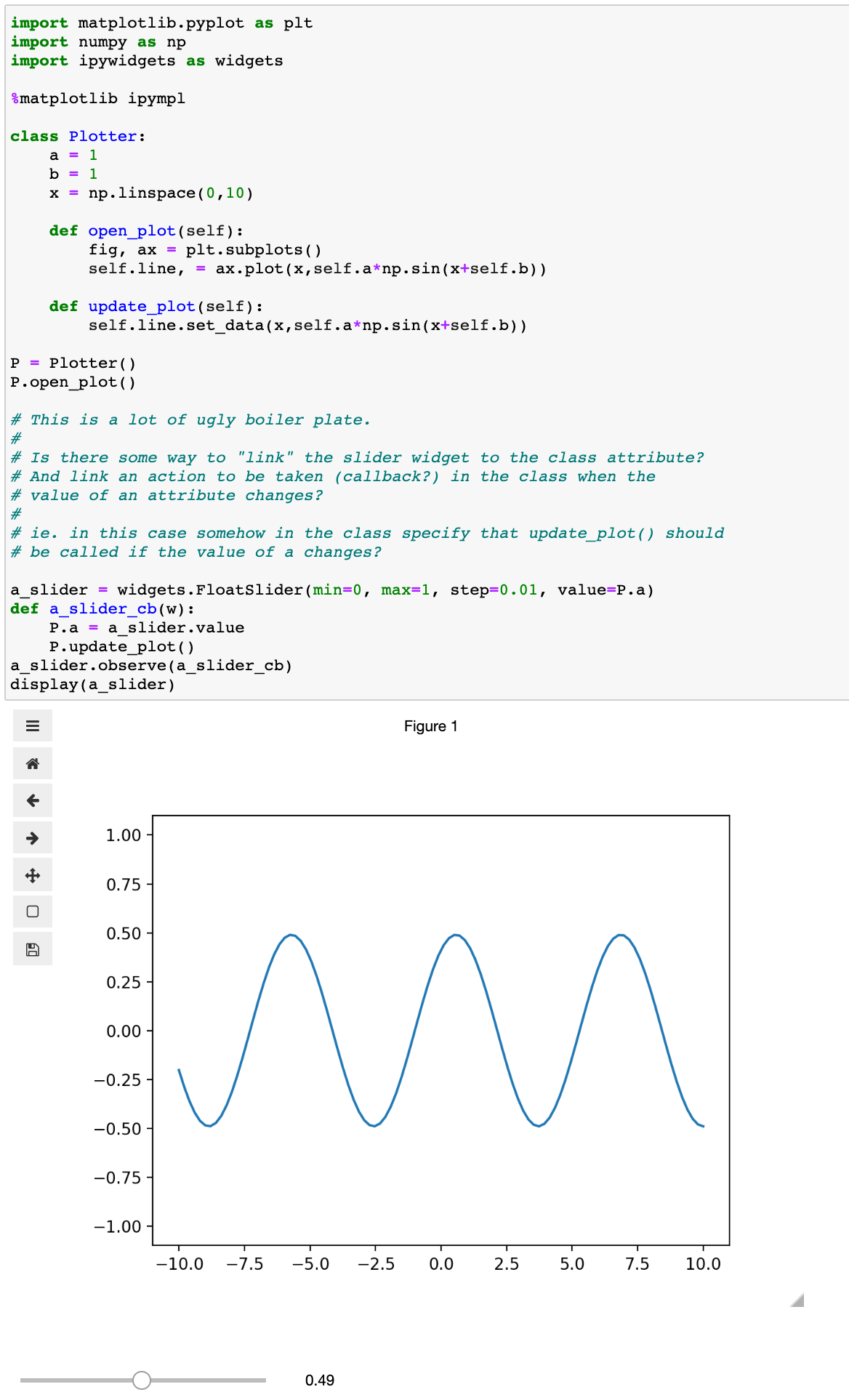Hi all,
A bit related to my previous question Python question: “observer pattern” actions for dictionary?:
I would like to build an interaction of a class with an ipywidget. Currently, I do this with a painful piece of boilerplate using callbacks (a bad habit from dirty C++ programming with FLTK…). But I feel this can be done in a much better way.
To be concrete, he is a minimalistic example of what I want to do:

It works, but the thing I don’t like is the last bit of linking the slider to the class attribute and an action:
a_slider = widgets.FloatSlider(min=0, max=1, step=0.01, value=P.a)
def a_slider_cb(w):
P.a = a_slider.value
P.update_plot()
a_slider.observe(a_slider_cb)
It’s ugly. And a pain to code. And in a larger project where I want to have 100+ sliders in tabs interacting with two plots at the same time via a class with hundreds of attributes, I feel I should be looking for a better way.
My question is then: is there an elegant, pythonic way to generate this linking and action?
In particular it seems it would make sense to associate / link the value of the slider widget to the value of the class attribute, when creating the slider. And then the logical place to define the action to be taken would be in the class itself, as it likely know what action should be taken if a changes.
@slavoutich mentioned trailets in my previous post. Could these be a way to do this? And if so, could you show how to modify my minimalistic code to use them?
Thanks!
Gary